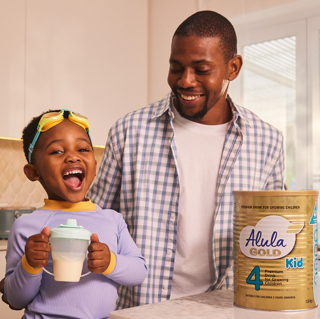How little steps guarantee great results
Many children with special needs feel overwhelmed by daily activities such as brushing teeth or getting dressed. A daily schedule of activities with predictable routines for each activity can make the world seem less chaotic and frightening to them.
Understanding Schedules and Routines
A schedule represents the main activities that happen across your child’s day. Routines are the activities that happen within your schedule. They are repetitive and usually involve a series of little steps. One example of a daily routine is your child’s morning routine and all the steps involved: getting up, going to the bathroom, brushing teeth, getting dressed, having breakfast, packing a school bag, and getting in the car. Children who understand the steps in routines quickly accomplish tasks with little or no adult assistance. Essentially, once taught, routines are daily activities that your child will be able to complete with no assistance. Bear in mind that ‘no assistance’ does not mean ‘no support’. It is important to note that your child’s preferred mode of learning is visual over verbal. Therefore, support can be in the form of a visual schedule or checklist that uses simple language and pictures/symbols. Pictures and symbols make the schedule more real and serve as reminders for your child. The rule of thumb for routines is that visual support must be provided at your child’s level of understanding.
How schedules and routines help

A consistent daily schedule combined with step-by-step routines helps create a predictable day. Children with special needs feel more confident and secure when their daily activities are predictable and familiar. Everyday activities and routines can provide comfort during challenging and uncertain times. Routines can help them understand what is expected of them in specific environments and life situations. As they can predict what will happen next, how people around them will behave, and what they will need to do, anxiety, as well as maladaptive behaviours, are reduced.
Essentially, schedules and routines at home/ school help children with special needs:
- Feel in control of their environment
- Feel safe, secure, and comfortable
- Know what is happening now and what comes next
- Know how to do an activity or task
- Engage in learning
The positive effect of routines on maladaptive behaviours
Both research and experience tell us that it is more effective to build positive behaviour than control negative behaviour. Routines can positively affect your child’s ability to complete routine tasks. At school, routines positively affect their academic performance as well as their behaviour. One proactive strategy I use as a teacher is to adopt consistent classroom routines. Establishing a consistent and predictable routine helps my students complete tasks without my assistance. By doing this, I accomplish two objectives: my students have the opportunity to learn and I can devote more time to actual teaching. I also make use of interactive routines to teach functional communication such as getting the teacher’s attention, appropriate group behaviour, and how to participate in discussions.
Using routines at home

As a parent, using routines will free up time for you to devote to other things. For example, a routine will help simplify a complex environment like your home and inform your child exactly what to expect, what is expected of them, and what behaviour is acceptable. Routines will allow your child to quickly accomplish day-to-day tasks. Routines will also help create smoother transitions between activities, allowing for fewer opportunities for disruptions to occur. Fewer disruptions result in fewer outbursts and meltdowns. In addition, when your child is expected to complete routine tasks, they have the opportunity to learn greater responsibility and self-management.
Routines can also help you teach your child the following:
- Appropriate social skills
- Communication skills
- Self-regulation
- Your core values and beliefs
Establishing Routines
To identify potential routines for teaching, all team members who live with and/or work with your child should analyse a typical day and list all the tasks your child has to do. The next step is to perform a task analysis. This involves analysing a specific activity and breaking it down into its individual steps. I suggest that parents and teachers select sequences of activities according to the time of day. For example, a common sequence on a school day morning may be to take off pyjamas, get dressed, eat breakfast, wash up, brush teeth, pack a school bag and get in the car. During school, routines would be related to school activities. It is very helpful for parents and teachers to work together to establish routines.
Implementing Routines
Your child has to be taught the routine steps systematically until they have mastered the routine. Mastery of a routine means your child can perform all the steps in the routine without adult assistance or prompts. The more systematic and consistent your routines are, the faster your child will learn them. Once taught, these steps should be reviewed and retaught frequently to ensure your child does not deviate from the routine. Children with special needs perform better if there is consistency between your expectations, their responses and your feedback. If you find that your child has made changes to the routine, it may be necessary to review your expectations, then model and provide them further opportunity to practice their performance, to restore a sense of consistency and order. Too many changes will make the routine unpredictable. This could result in your child becoming confused and anxious. Change must be communicated before it happens, using simple language /pictures/symbols. Make sure there is enough time for your child to complete tasks without feeling rushed. Make time to relax into the routine. This will further reduce any anxiety.
Using rewards to reinforce routines
Providing a reward for completing a routine helps make it a positive experience. Rewards can be anything your child enjoys such as praise, time doing a favourite activity, or attention. Keep in mind that rewards must be earned and not used as bribery. Rewards must also be age-appropriate. Before a routine becomes familiar and feels safe for a child, parents or teachers might find that maladaptive behaviours increase as a way of challenging the new boundaries. With perseverance in using a structured routine, your child will Iearn to accept the boundaries and begin to feel safe in the routine.
Food for thought
Think about your own experiences: Have you ever been in a work environment where you did not know what would happen from day to day and you did not know what was expected of you? The day might end at 16:00 or maybe at 18:00. You might receive your salary on the 15th or maybe the 25th. How well would you do in that situation? Let’s strive to make our children the best they can be through the use of schedules and routines.
By Bridget Vazhure – Special Needs Teacher – Glenoaks Remedial & Special Needs School
Sources of Information
- Bos, C. S., & Vaughn, S. (2002). Strategies for teaching students with learning and behavior problems (5th ed.). Boston: Allyn & Bacon.
- Cheney, C. O. (1989, April). Preventive discipline through effective classroom management.
- Paper presented at the Preconvention Training Program “Exploring the Theory/Practice
- Link in Special Education” at the Annual Convention of the Council for Exceptional Children. (ERIC Document Reproduction Service No. ED 304 869)
- Frost, L. & Bondy, A. (2002). The Picture Exchange Communication System Training Manual. Pyramid Educational Products.
- Kabot, S., & Reeve, C. (2012). Building Independence: How to Create and Use Structured Work Systems.
- Autism Asperger Publishing Co,US.
- Savage, T. (1999). Teaching self-control through management and discipline. Boston: Allyn & Bacon.
- Strain, P. S., & Sainato, D. M. (1987). Preventive discipline in early childhood. Teaching Exceptional Children, 19(4), 26-30.
















I love reading this